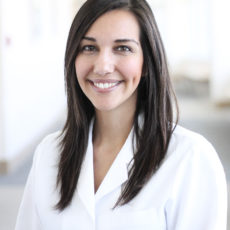Seborrheic Dermatitis

Overview
Seborrheic Dermatitis Overview
Commonly known as dandruff, seborrheic dermatitis is a skin condition that primarily affects the scalp. In babies and infants, it is often called cradle cap. Additionally, it can affect oily areas of the face, sides of the nose, ears, eyelids, eyebrows, back and chest.
Experts believe seborrheic dermatitis is caused by the common yeast found on most skin. However, people with seborrheic dermatitis tend to develop an inflammatory reaction against the yeast in their skin.
The condition is common, with more than 3 million people diagnosed each year in the U.S. It is not contagious and is most common in babies up to 3 months of age and adults between 30 and 60 years old. Although anyone can get it, you are at an increased risk of developing seborrheic dermatitis if you have any of the following conditions:
- Epilepsy
- Parkinson’s disease
- Acne, psoriasis or rosacea
- Malassezia fungal infection
- Weakened immune system
- Recovering from a heart attack or stroke
Symptoms
Seborrheic Dermatitis Symptoms
Look for the following indicators if you suspect you have seborrheic dermatitis:
Diagnosis
Seborrheic Dermatitis Diagnosis
The first step toward getting a diagnosis for your skin condition is scheduling an appointment with your dermatologist. They will ask about your medical history, your family’s medical history and examine your skin. If your doctor suspects you may have seborrheic dermatitis, they may order a biopsy to rule out other skin conditions such as psoriasis, rosacea, atopic dermatitis (eczema) or tinea versicolor.
Treatments
Seborrheic Dermatitis Treatments
Treatments for seborrheic dermatitis include:
Corticosteroids
Creams, ointments and shampoos containing corticosteroids
Calcineurin Inhibitors
Creams, ointments and shampoos containing calcineurin inhibitors tacrolimus and pimecrolimus
Antifungals
Antifungal creams, gels and shampoos containing ketoconazole or ciclopirox
Be sure to speak with your dermatologist about which of the above options are best for you.
There are also several at-home remedies, including over-the-counter creams, ointments and dandruff shampoos that you can try. Different products contain different active ingredients, so you may need to try several before discovering the ones that work best for you.
Other treatments you can try at home include:
Mineral oil
Applied to the scalp, left on for an hour, then brushed through hair, followed by an appropriate shampoo.
Mild soaps
Mild soaps used regularly to wash the affected areas and thoroughly rinsed off afterward.
Medicated creams
Medicated creams containing a corticosteroid or antifungal properties can be applied to the affected area.
Specialists

